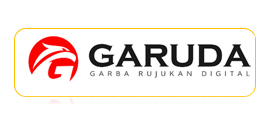PENGEMBANGAN MODEL PEMBELAJARAN ‘’ARTICLE ASSIGNMENT-BASED TEACHING PRACTICE’’ BERBASIS APLIKASI RESPONSIVE WEBSITE DESIGN (ARBES)
Abstract
Keywords
Full Text:
PDF (Bahasa Indonesia)References
Afolabi, S. O. (1999). The philosophy of supervision in education. Journal of Kwara State College of Education, 1, 39–48.
Akbar, S. (2013). Instrumen perangkat pembelajaran. Bandung: PT Remaja Rosda-karya.
Arends, R., & Kilcher, A. (2010). Teaching for student learning. Routledge New York.
Baturay, M. H., & Birtane, M. (2013). Responsive web design: A new type of design for web-based instructional content. Procedia-Social and Behavioral Sci-ences, 106, 2275–2279.
Brame, C. (2016). Active learning. Vanderbilt University Center for Teaching.
Cairns, L., & Malloch, M. (2011). Theories of work, place and learning: New direc-tions. The Sage Handbook of Workplace Learning, 3–16.
Defelice, R. A., & Sittler, R. L. (2010). A brief history of the Dick and Carey Model. Journal of Communications Media Studies, 2(1), 101–115.
Dick, W., Carey, L., & Carey, J. O. (2005). The systematic design of instruction.
Drake, F. D., & Brown, S. D. (2003). A systematic approach to improve students’ historical thinking. The History Teacher, 36(4), 465–489.
Ercikan, K., & Seixas, P. C. (2015). New directions in assessing historical thinking. Routledge New York, NY.
Hudaidah, H. (2014). Historical Thinking, Keterampilan Berpikir Utama Bagi Maha-siswa Sejarah. Criksetra: Jurnal Pendidikan Sejarah, 3(1).
Kuklinski, H. P., Brandt, J., & Puerta, J. P. (2008). Mobile Web 2.0. Theoretical-technical framework and developing trends. International Journal of Inter-active Mobile Technologies (IJIM), 2(4), 54–61. https://doi.org/10.3991/ijim.v2i4.535
Lase, D. (2019). Education and industrial revolution 4.0. Jurnal Handayani Pgsd Fip Unimed, 10(1), 48–62.
Learning, A. (2013). Strategies to promote critical thinking and active learning. Teach-ing in Nursing E-Book: A Guide for Faculty, 258.
McPeck, J. E. (2016). Critical thinking and education. Routledge.
O’Brien, C. P., Childress, A. R., McLellan, A. T., & Ehrman, R. (1992). A learning model of addiction. Portions of This Review Were Previously Presented at a National Institute on Drug Abuse Technical Review.
Paiva, S., & Pinheiro, P. (2020). Responsive Web Design for Smartphones Users: A Case Study of Higher Education Institutions in Portugal.
Peechapol, C., Na-Songkhla, J., Sujiva, S., & Luangsodsai, A. (2018). Development of Smartphone Application Based on the Theory of Planned Behaviour to En-hance Self-Efficacy for Online Learning. International Journal of Interac-tive Mobile Technologies (IJIM), 12(4), 135–151. https://doi.org/10.3991/ijim.v12i4.8715
Shahroom, A. A., & Hussin, N. (2018). Industrial revolution 4.0 and education. Inter-national Journal of Academic Research in Business and Social Sciences, 8(9), 314–319.
Streumer, J. N., & Kho, M. (2006). The world of work-related learning. In Work-related learning (pp. 3–49). Springer.
Sulistyo, W. D., Khakim, M. N. L., Jauhari, N., & Anggraeni, R. D. (2021). Fun Learn-ing History: Explore the History of Water Sites Based on Android. Interna-tional Journal of Emerging Technologies in Learning (IJET), 16(07), 105–118.
Taylor, E. W. (1994). A learning model for becoming interculturally competent. Inter-national Journal of Intercultural Relations, 18(3), 389–408.
DOI: http://dx.doi.org/10.17977/um020v16i12022p33-42
Refbacks
- There are currently no refbacks.
Copyright (c) 2022 Sejarah dan Budaya : Jurnal Sejarah, Budaya, dan Pengajarannya

This work is licensed under a Creative Commons Attribution-ShareAlike 4.0 International License.
Editorial office:
History Department, Faculty of Social Science,
Universitas Negeri Malang
Jl. Semarang No.5 Kota Malang 65145,
Phone. (0341) 551312,
email: jsb.journal@um.ac.id
Website: http://journal2.um.ac.id/index.php/sejarah-dan-budaya
P-ISSN 1979-9993
E-ISSN 2503-1147

This work is licensed under a CC BY SA 4.0.










